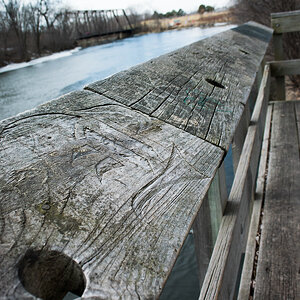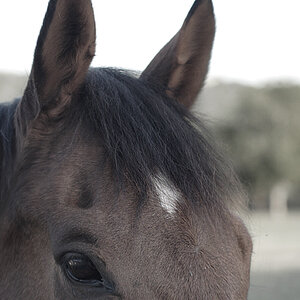Yemme
No longer a newbie, moving up!
- Joined
- Apr 30, 2008
- Messages
- 2,654
- Reaction score
- 13
- Location
- NY
- Can others edit my Photos
- Photos NOT OK to edit
Most of the spots are certainly the result of a dirty scanner. Dust and grunge on the slide itself is generally in focus and sharp, not blurred the way dust in the scanner generally is.
A few of the spots could be dust or grunge on the slide. This can get there when handling the slide. It is also possible for small specks to be the result of imporperly filtered and replenished processing chemicals. There is a type of "gunk" that is produced in the chemistry call "tar" that must be filtered out. Poorly maintained chemistry or equipment can let enough be produced to leave specks on the processed film. It if is "tar" is can't be cleaned off.
Dust in the camera settling on the file prior to exposure is EXTREMELY unlikely. Unlike digital cameras, the exposed frame is used only once. Dust settling on it during the exposure affects only that exposure and rarely has time to actually setting on the film surface before the exposure is over. Dust that settles after the exposure has no effect on film. On digital, such dust doesn't affect the shot that let it pass through the shutter but affect all subsequent images until the sensor is cleaned.
With film, by far the most likely source of preexposure dust on the negs it lint or dirt on the felt lip of the cassette. Poor handling of the cassette (removing the cassette from its factory packaging and putting in a pocket or letting it sit "naked" in a camera bag) is generally the cause. Occasionally some cheap house-brand film is supplied by a really bargin manufacturer whose quality control is poor and the felt sheds. In a quarter of a century of dealing with film processing in camera stores I never saw a proven case of flautly felt on name brand film. I did see it on cheap bulk cassettes for hand loading and on a few house-brand rolls of film.
Dust settling on the film prior to exposure will leave a shadow. On slide film, that shadow would be black on the film. Since its actually imaged on the film, it can't be cleanded off.
Thank you for your input Dwig... The chemicals part sounds like that's what it was. I understand though that I do have some dark hair spots that is settling of dust particles. I have a few more slides with smaller blotches.
The reason why I think it was the processing is because I got back one slide and there an indentation concave on the film. It was not a flat surface and I hadn't done anything to them to create that. It was there the second I looked at the slide.
Maybe I might try a different spot to see if it is my camera even after I clean it ... Who knows. Thanks:hug::.












